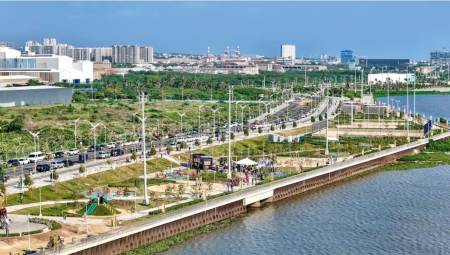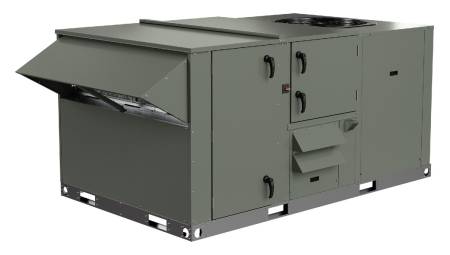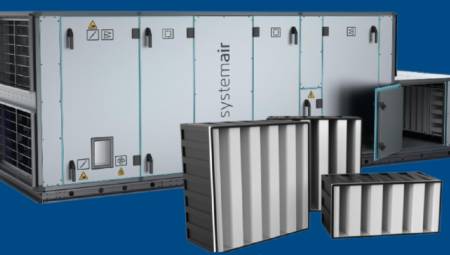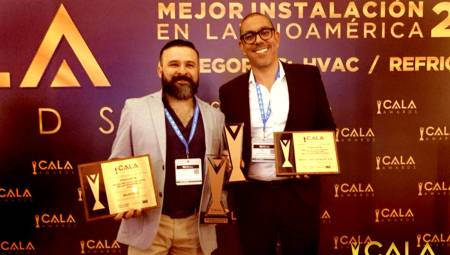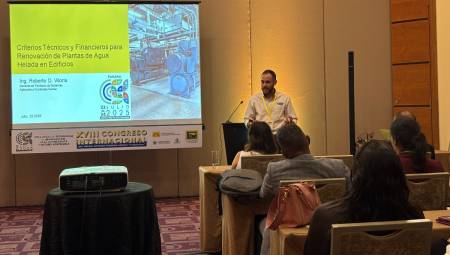Let's look at the reason. For years, energy efficiency programmes for buildings have had little or no responsibility and, by this time, follow-up studies have shown that the projects in these programmes have been considerably insufficient to achieve their projected energy reductions. the discrepancies between achievable and actual energy reductions are much larger. This has been perfect for the electric utilities that have managed these programs, since at the management level the real goal of expanding electricity sales has not changed. Data developed from conservation programs have been used to quantify and justify the need to build new power plants. Investment in energy efficiency has been found to limit long-term potential. Utilities haven't done much to shift the generally neglected focus toward energy efficiency. Currently, we have an independent group that really wants energy efficiency to work. The hope is that a strong commitment to improving energy efficiency in buildings will lead society on a new path to mitigate climate change, which is produced from our greenhouse gas emissions. Energy efficiency can really do it and, as we have generally said, if applied properly it could contribute a great deal in this regard in the short term. But due to the languid approach to energy efficiency and the lack of responsibility that occurs in the process of improving it, our industry is the one that has taken over in recent decades; there is currently no timely warehouse supply process to develop truly effective energy efficiency improvements that ensure long-term performance. I think we can all imagine the big engineering and construction players standing in long lines with their polished presentations and fantastic brochures, detailing the successful efficiency projects they have designed and managed. Of course, the truth is that very few of them, have really succeeded as they could or even as they have presented it, and having invested trillions of dollars, those cities and banks participating in this program can conclude, as utilities have already done, that energy efficiency has limited potential and really cannot be the greatest potential to reduce greenhouse gas emissions in the short term. This result, of course, would be a real tragedy. The only way to prevent this is for us in the industry, who have experience with the positive and negative outcomes of the old and current energy efficiency programs, to speak out about the need to improve the content and accountability of our industry's approach to building efficiency improvements. in such a way that initiatives like this do not simply repeat the mistakes of the current programmes. {mospagebreak} How do you promote more effective energy efficiency efforts? Well, we need to do energy efficiency programs that are similar to other investments. The last time I went to a bank to borrow for a new home, the bank official was surprisingly disinterested in the features and details that excited me about my new home. What he wanted to know was how I could assure the bank that I would repay the loan. I'm still surprised to talk to managers of utility efficiency programs about how the opposite is true. They want to know all about the technical details, but the responsibility for the proposed energy savings is almost unimportant (an afterthought). Almost never is any formal requirement presented, which commits the projects to the real achievement of the projected savings, especially in the long term. We need to communicate to people who are getting involved in promoting efficiency, that the current available models for improving energy efficiency in buildings, present many flaws. A basically new model for investing in improving energy efficiency, whether to capture dollar savings or to reduce emissions, must be developed, to start as a financial model similar to other investments. Under the current condition of integrated controls and networks, the accountability requirements for such a financial process do not require large budgets for measurement, verification or current commissioning. The reporting system can be easily built on a project-by-project and, as was the case with the bank official, the efficiency program manager must be able, from his desktop computer, to "click" on each project and check if we are up to date on our energy savings payments. So if we have the opportunity, the advice we need to give to the Clinton Foundation initiative and any other energy efficiency program that really wants to succeed, is to think like a bank, and invest in those projects that offer the highest return on a large scale and that show rigor in accountability during the term of the investment. Such a level of diligence and accountability is not at all difficult to integrate into efficiency improvements, but it is almost always non-existent in current efficiency programs.
Responsible energy efficiency
Let's look at the reason. For years, energy efficiency programmes for buildings have had little or no responsibility and, by this time, follow-up studies have shown that the projects in these programmes have been considerably insufficient to achieve their projected energy reductions. the discrepancies between achievable and actual energy reductions are much larger. This has been perfect for the electric utilities that have managed these programs, since at the management level the real goal of expanding electricity sales has not changed. Data developed from conservation programs have been used to quantify and justify the need to build new power plants. Investment in energy efficiency has been found to limit long-term potential. Utilities haven't done much to shift the generally neglected focus toward energy efficiency. Currently, we have an independent group that really wants energy efficiency to work. The hope is that a strong commitment to improving energy efficiency in buildings will lead society on a new path to mitigate climate change, which is produced from our greenhouse gas emissions. Energy efficiency can really do it and, as we have generally said, if applied properly it could contribute a great deal in this regard in the short term. But due to the languid approach to energy efficiency and the lack of responsibility that occurs in the process of improving it, our industry is the one that has taken over in recent decades; there is currently no timely warehouse supply process to develop truly effective energy efficiency improvements that ensure long-term performance. I think we can all imagine the big engineering and construction players standing in long lines with their polished presentations and fantastic brochures, detailing the successful efficiency projects they have designed and managed. Of course, the truth is that very few of them, have really succeeded as they could or even as they have presented it, and having invested trillions of dollars, those cities and banks participating in this program can conclude, as utilities have already done, that energy efficiency has limited potential and really cannot be the greatest potential to reduce greenhouse gas emissions in the short term. This result, of course, would be a real tragedy. The only way to prevent this is for us in the industry, who have experience with the positive and negative outcomes of the old and current energy efficiency programs, to speak out about the need to improve the content and accountability of our industry's approach to building efficiency improvements. in such a way that initiatives like this do not simply repeat the mistakes of the current programmes. {mospagebreak} How do you promote more effective energy efficiency efforts? Well, we need to do energy efficiency programs that are similar to other investments. The last time I went to a bank to borrow for a new home, the bank official was surprisingly disinterested in the features and details that excited me about my new home. What he wanted to know was how I could assure the bank that I would repay the loan. I'm still surprised to talk to managers of utility efficiency programs about how the opposite is true. They want to know all about the technical details, but the responsibility for the proposed energy savings is almost unimportant (an afterthought). Almost never is any formal requirement presented, which commits the projects to the real achievement of the projected savings, especially in the long term. We need to communicate to people who are getting involved in promoting efficiency, that the current available models for improving energy efficiency in buildings, present many flaws. A basically new model for investing in improving energy efficiency, whether to capture dollar savings or to reduce emissions, must be developed, to start as a financial model similar to other investments. Under the current condition of integrated controls and networks, the accountability requirements for such a financial process do not require large budgets for measurement, verification or current commissioning. The reporting system can be easily built on a project-by-project and, as was the case with the bank official, the efficiency program manager must be able, from his desktop computer, to "click" on each project and check if we are up to date on our energy savings payments. So if we have the opportunity, the advice we need to give to the Clinton Foundation initiative and any other energy efficiency program that really wants to succeed, is to think like a bank, and invest in those projects that offer the highest return on a large scale and that show rigor in accountability during the term of the investment. Such a level of diligence and accountability is not at all difficult to integrate into efficiency improvements, but it is almost always non-existent in current efficiency programs.



